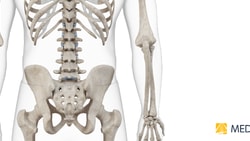To X-Ray or Not to X-Ray?
July 5, 2016
2 min. read

Ordering musculoskeletal imaging is a decision that every medical professional makes on a regular basis. It can be a confusing decision onwhen to order, or even which imaging modality offers the best results. Fortunately, there are numerous published musculoskeletal clinical decision rules, on topics rangingfrom cervical spine1-3to the foot and ankle4-7, that will help us make those decisions.
Refined Quebec Decision Rules
For instance, Emond, et al.8 refined the Quebec decision rules for imaging of shoulder dislocations. In their study they found three discrete combinations of factors which identified all 40 clinically significant fracture dislocations:
Aged 40 years or older AND humeral ecchymosis,
Aged 40 years or older AND first episode of dislocation, or
Younger than 40 years AND injury mechanism other than a fall from standing height or an atraumatic injury.
They reported a sensitivity of 1.0 with a specificity of 0.34, showing that the refined clinical decision rules are an excellent screening tool for the clinician and decision making for imaging.

Appropriate Referrals
This is one example of how clinical criteria help the practitioner with theirdecision to order imaging. These screening tools help keep the cost of healthcare down, decrease the amount of unnecessary imaging, and decrease harm to the patient by excess radiation exposure or being subject to unnecessary interventions. By following these recommendations, patients can be appropriately referred, or not, for imaging.
Below, Robert Boyles discusses imaging for shoulder fractures and dislocations from his course, Imaging for Upper Quarter Sports Injuries.






